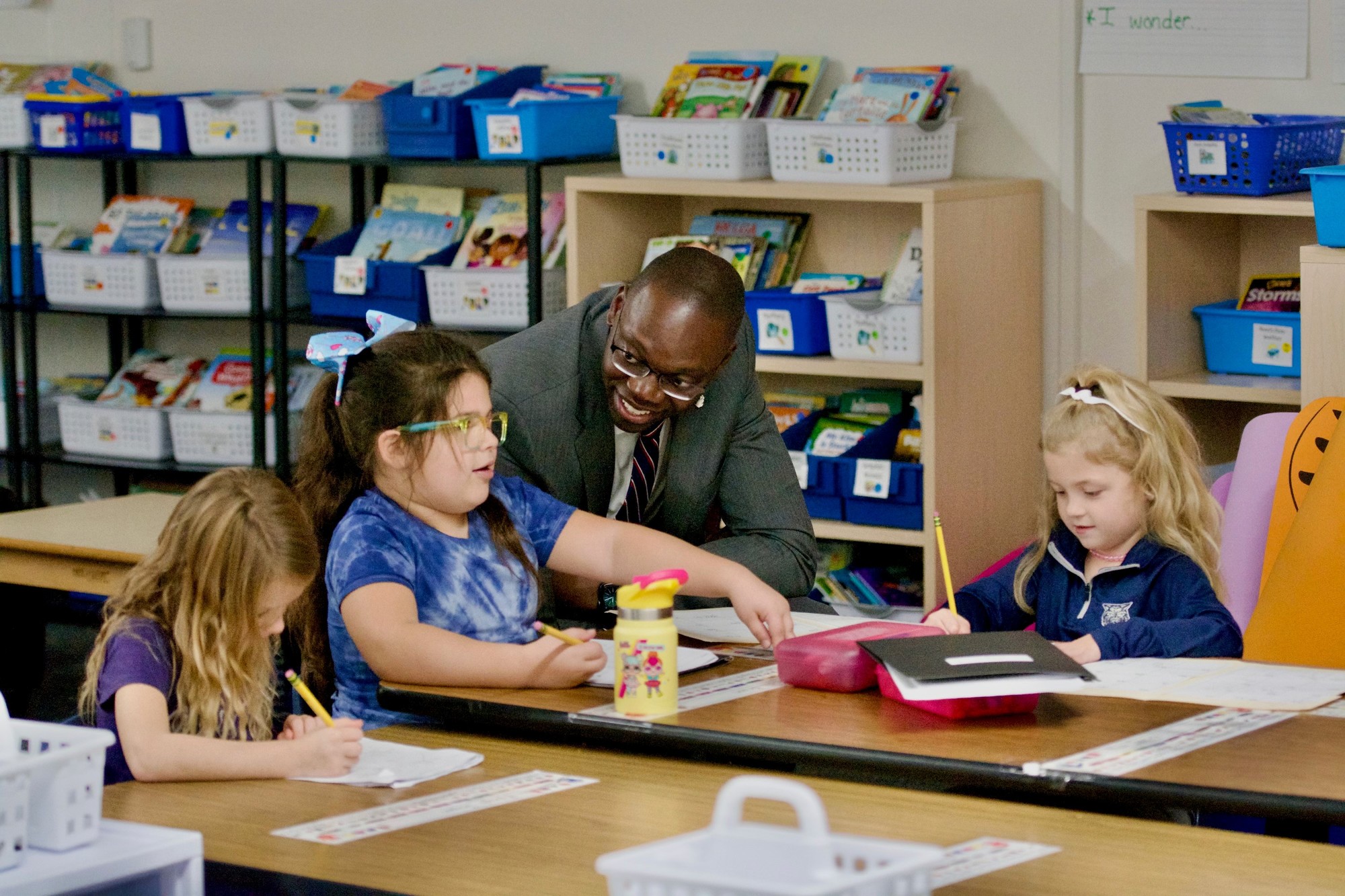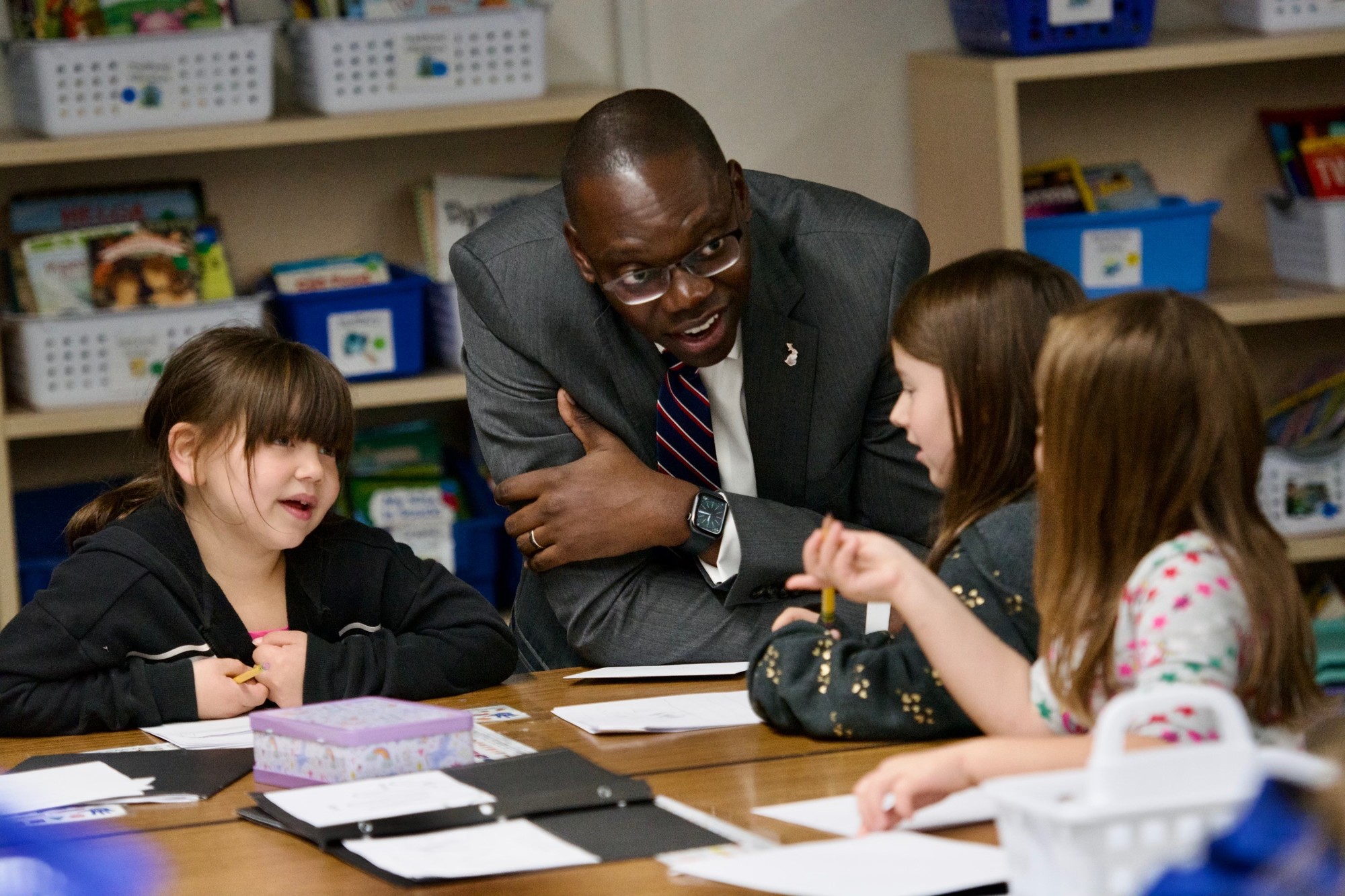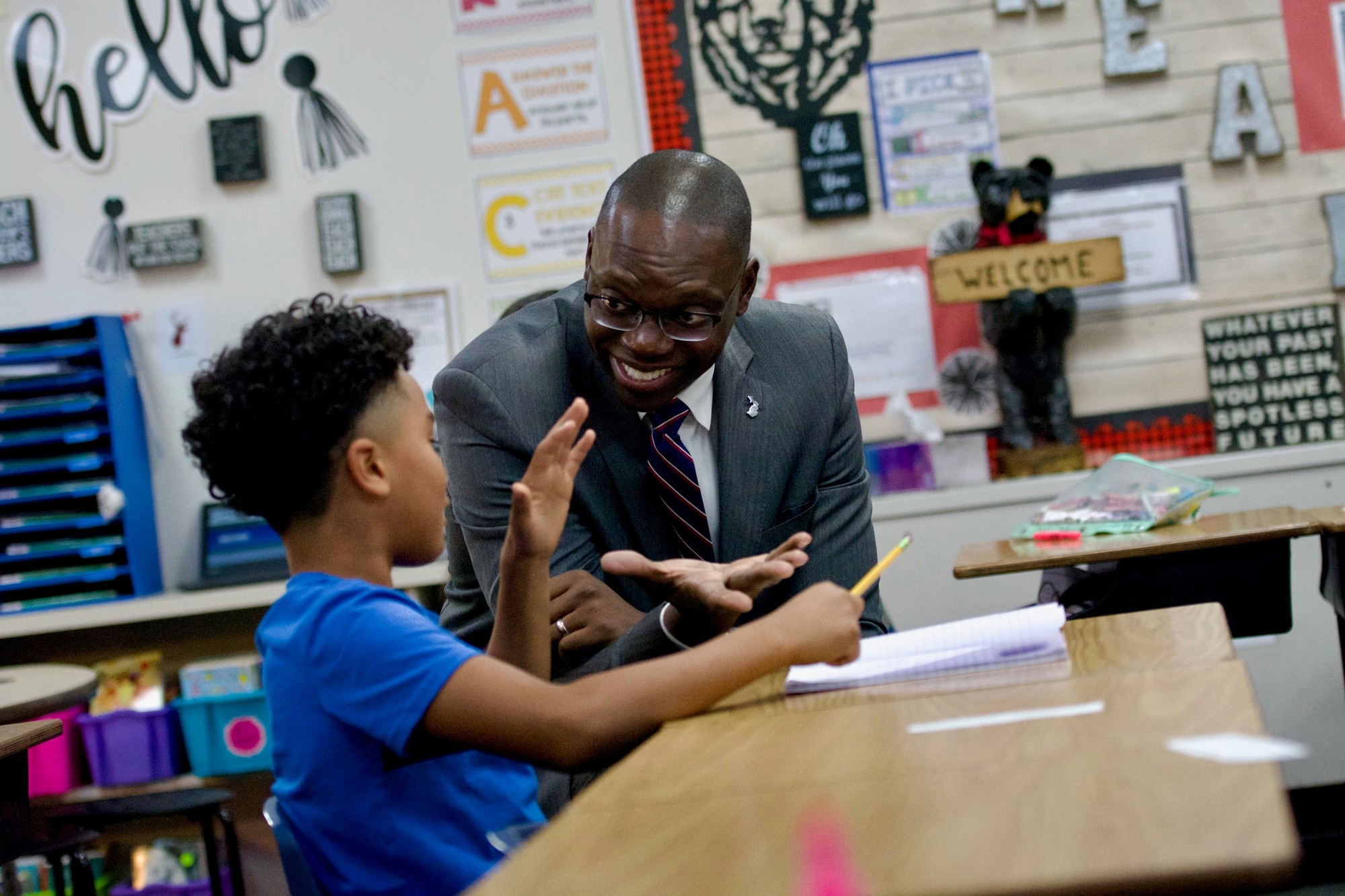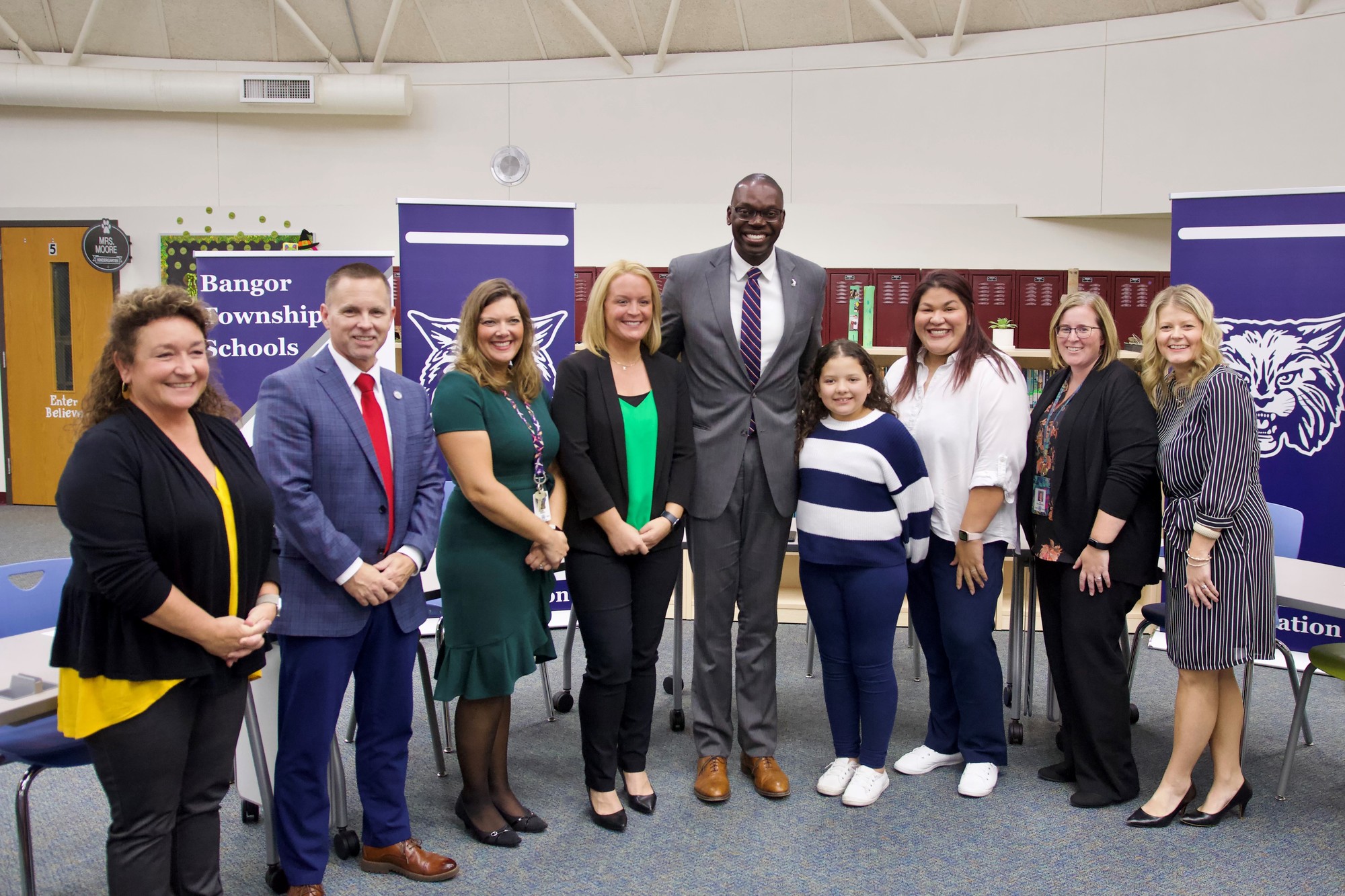
FOR IMMEDIATE RELEASE
October 17, 2022
Contact: [email protected]
PHOTOS: Lt. Governor Gilchrist Tours Student Support Program, Highlights Administration’s Investments in Tutoring and Additional Supports for Students
BANGOR TOWNSHIP, Mich. – Today, Lt. Governor Garlin Gilchrist II visited Lincoln Elementary in Bangor Township where he toured the school’s tutoring program and learned about the work education professionals are doing to support student growth. Then, Lt. Governor Gilchrist participated in an education roundtable alongside the superintendent and principal, as well as an instructional support specialist, parent, teacher, and student to discuss the administration’s record investments in Michigan educators, students, and schools. Recently, Governor Whitmer put forward the MI Kids Back on Track plan to invest $280 million to tackle unfinished learning with tutoring or other forms of personalized instruction before, during, or after school.
Michigan has received $50 million to support programs like the MI Kids Back on Track plan and Governor Whitmer and Lt. Governor Gilchrist are calling on the legislature to fund the remaining $230 million to ensure kids are getting critical personalized support needed to get kids on track for success.
“As a parent with kids in public school, I know how important it is to partner with parents, attract and retain the best educators, and support our students with the resources they need to thrive in the classroom and beyond,” said Lt. Governor Garlin Gilchrist II. “Governor Whitmer and I are committed to positioning young people in Michigan for success, which is why we passed a historic education budget and proposed the MI Kids Back on Track plan, which would invest $280 million in continuation of personalized academic supports that help students thrive. We will keep working hard to help educators and students tackle unfinished learning and get students the best education possible.”
MI Kids Back on Track
Governor Whitmer’s MI Kids Back on Track plan would invest $280 million of Michigan’s $6 billion in additional revenue to continue to tackle unfinished learning with tutoring or other forms of personalized instruction before, during, or after school. Michigan schools have already received state and federal resources from the American Rescue Plan specifically to address unfinished learning. MI Kids Back on Track would build on this funding with state resources to bolster tutoring programs and individualized instruction that meets kids’ needs.
Bangor Township Schools is in Bay City and serves 2,500 students from grades K-12. This year’s focus is “Excellence Everyday” in schools and programs. Across the district, it means connecting students with individualized academic help and doing whatever it takes to achieve success. At Lincoln Elementary, tutors work with students to help them meet academic goals and use an “I Teach/You Teach” approach to help students understand complex concepts.
"The continued investment in education by the Governor and Legislature is allowing ISD's and local districts to put in place systems of support that will help in learning recovery as well as long term student achievement,” said Matt Schmidt, Bangor Township Schools Superintendent. “This year's record investment in education will impact our schools for decades to come, and is a strong commitment to students and to our schools."
"The work happening in Bangor Township Schools, and across Bay and Arenac counties, to support high quality literacy instruction has been focused, intentional, and is making a significant impact on our students,” said Michelle Goaley, Curriculum Director at Bay-Arenac ISD. “Our ISD and district partnership to implement the GELN Essential Instructional Practices in Literacy is vital to ensuring every student gets the very best instruction every day."
FY 2023 Education Budget Investments
The recently signed bipartisan education budget can be divided into six key sections: students, mental health, learning supports, student safety, school infrastructure, and teacher recruitment.
1) Students
The budget invests the highest state per-pupil funding in Michigan history—$9,150 for every kid, in every public school district. Additional support for the nearly 200,000 special education students and 710,000 at-risk students in Michigan. Expanding funding for career and technical education programs by 27%.
2) Mental Health
The budget includes dedicated mental health dollars for every student in every school. Increasing funding for teen centers, district mental health grants, and TRAILS, which offers training to school mental health professionals so they can better serve students with evidence-based services.
3) Teacher Recruitment
The budget funds MI Future Educator Fellowships, which pay up to $10,000 in tuition for 2,500 future Michigan educators a year, $9,600 stipends a semester for student teachers, and Grow-Your-Own programs that help districts put support staff on no-cost paths to become educators.
4) School Infrastructure
$250 million for school construction and renovations, helping them build or refurbish classrooms, labs, and libraries.
5) Learning Supports
The budget expands before and after-school programs to keep kids engaged. It offers every kid in Michigan tutoring to help catch up and get on track for long-term success, and resources for districts to develop learning pods for academically at-risk and economically disadvantaged students.
6) Student Safety
The budget includes dedicated school safety dollars for every student in every school. It includes funds to hire more on-campus school resources officers, create an intervention system for at-risk students that brings together law enforcement, schools, and mental health professionals, and establish a school safety commission.
Governor Whitmer’s Education Investments
For four years in a row, Governor Whitmer has worked across the aisle to make the largest education investments in Michigan history—without raising taxes. Since taking office, the governor has tripled the number of literacy coaches, closed the funding gap between schools, boosted state per-student investment to an all-time high, and helped districts hire thousands of teachers and on-campus mental health professionals.
###
|
||||




